Top 15 Most Beautiful Birds In North America
| Table of Contents |
According to recent estimates, there are approximately 10,000 bird species in the world. This number is constantly updated as new species are discovered and taxonomic revisions occur. North America is home to roughly 1,100 bird species.
This includes a wide range of habitats from the Arctic tundra in the north to tropical regions in the south, contributing to the high diversity of bird species. From the forests of Canada to the wetlands of Florida, North America is home to some of the world's most stunning avian species.
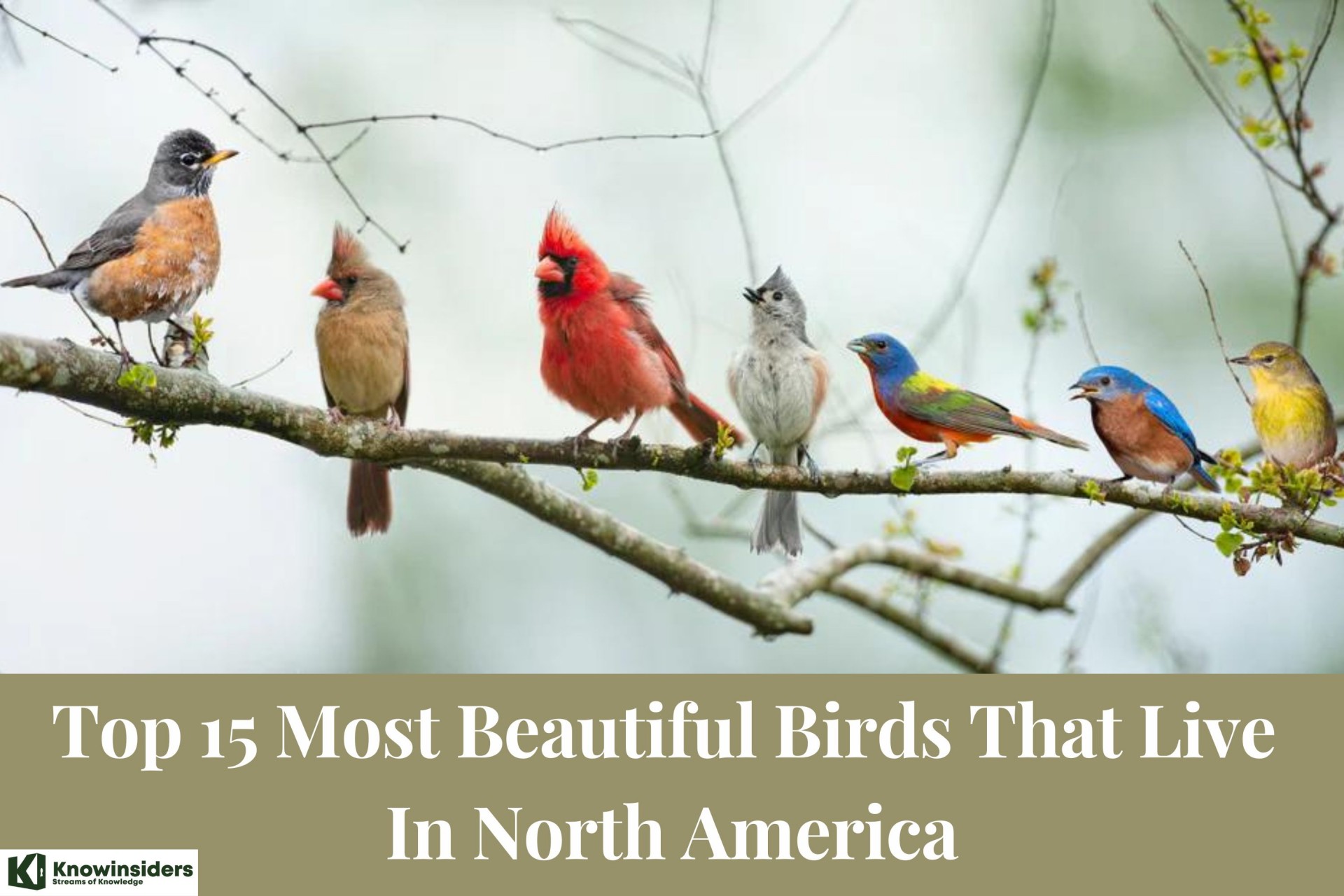 |
| Top 15 Most Beautiful Birds That Live In North America |
Why North America Hosts Many Beautiful Birds
North America encompasses expansive and diverse terrains, such as forests, deserts, wetlands, grasslands, and coastal areas. Each habitat provides a unique environment for various bird species, enabling a diverse range of birds to flourish.
North America is situated along significant migratory pathways. Migratory birds move between their breeding and wintering habitats, resulting in a diverse community of species that consists of both resident birds and migratory birds. These migrations introduce a wide range of bird species and impressive biodiversity to different regions of the continent during different seasons.
North America's diverse ecosystems provide ample food sources, which sustain substantial bird populations. Flowering plants, insects, berries, and fish all contribute to the abundant food sources that support the robust and thriving populations of these birds.
North America boasts numerous protected areas, national parks, wildlife refuges, and conservation programs with the explicit goal of safeguarding natural habitats and avian populations. These endeavors aid in guaranteeing the flourishing of bird species by mitigating the risks posed by habitat destruction and pollution.
The diverse range of climates, spanning from frigid Arctic conditions to balmy tropical temperatures, fosters habitats that are conducive to a wide array of avian species. The diverse climatic zones of the continent provide suitable habitats and resources for birds with different requirements and adaptations, thereby enhancing the overall avian diversity.
Top 15 Most Beautiful Birds That Live In North America
1. Northern Cardinal (Cardinalis cardinalis)
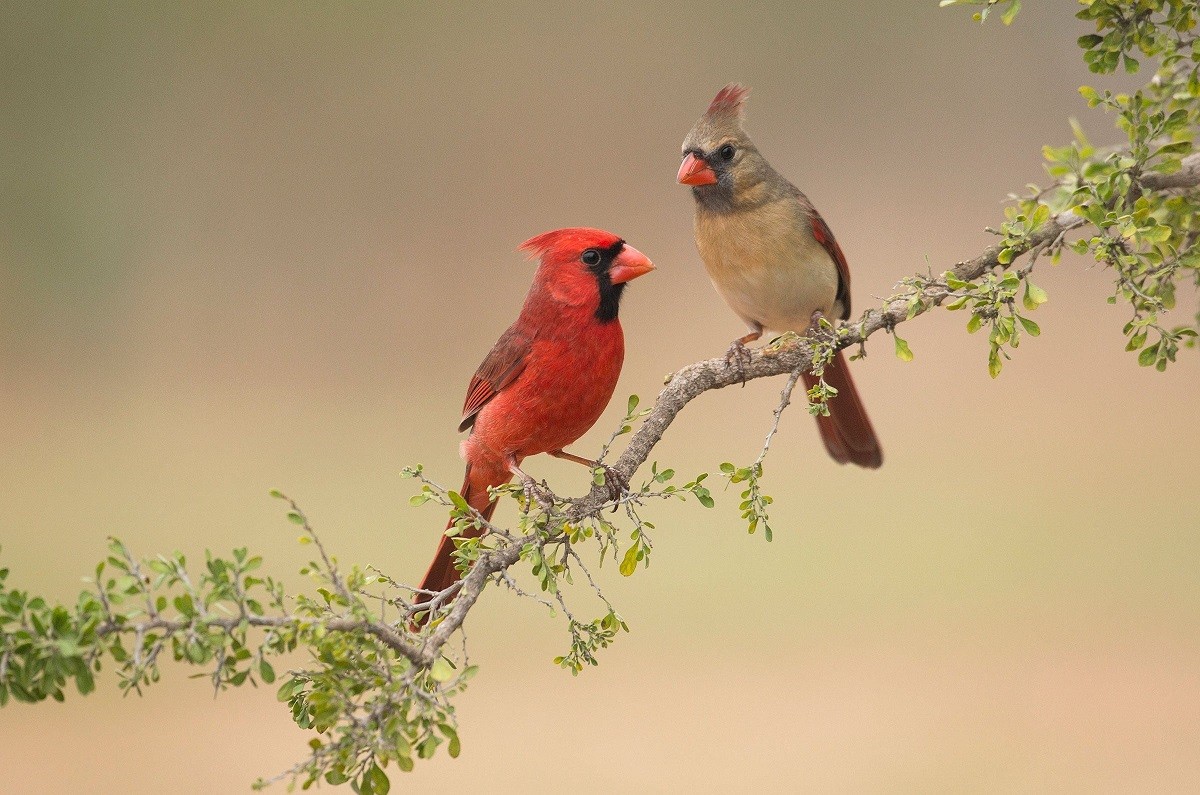 |
| Northern Cardinal |
Often just known as the Cardinal, the Northern Cardinal is a beloved emblem of beauty and song throughout North America. Over the eastern and central parts of the continent, these birds are found in woodlands, gardens, and metropolitan areas as well as other habitats. With his vivid red plumage and unique crest, the male Northern Cardinal is easily identifiable; the female sports a more subdued brown hue with reddish highlights.
Using their melodic, clear whistle-like songs to establish territory and communicate, Northern Cardinals are well-known for During the breeding season, males often participate in lively singing contests that fill the air with their captivating tunes. Though they mostly eat seeds, these birds are flexible enough to consume insects, berries, and fruit.
Male Cardinals might offer food to females as part of their courtship displays during mating rites. Once a pair forms, they stay monogamous throughout the breeding season, cooperating to build a cup-shaped nest of twigs, grasses, and other plant materials in shrubs or trees.
2. American Goldfinch (Spinus tristis)
 |
| American Goldfinch |
Particularly in summer, the American Goldfinch is a brilliant sight with its black wings and vivid yellow feathers. Usually found flitting in open fields and gardens is this little finch.
Often called Eastern Goldfinch, the American Goldfinch is a small but striking bird distinguished by black wings and brilliant yellow plumage. From southern Canada to Mexico, these finches—which occupy open fields, meadows, and suburban areas—are found all around North America.
Often seen in flocks, particularly during the non-breeding season, American Goldfinches are quite social birds. Mostly seed eaters, they like sunflower, dandelion, and thistle seeds. Their specialized bills are efficient foragers since they are designed to extract seeds from plant heads.
Male American Goldfinches show a more vivid yellow plumage to draw mates during the breeding season; female American Goldfinches have a more subdued coloration. Weaving from plant fibers, grasses, and spider silk, they create their nests in shrubs or trees. Usually high above the ground, these nests are meant to be predator-protected.
3. Baltimore Oriole (Icterus galbula)
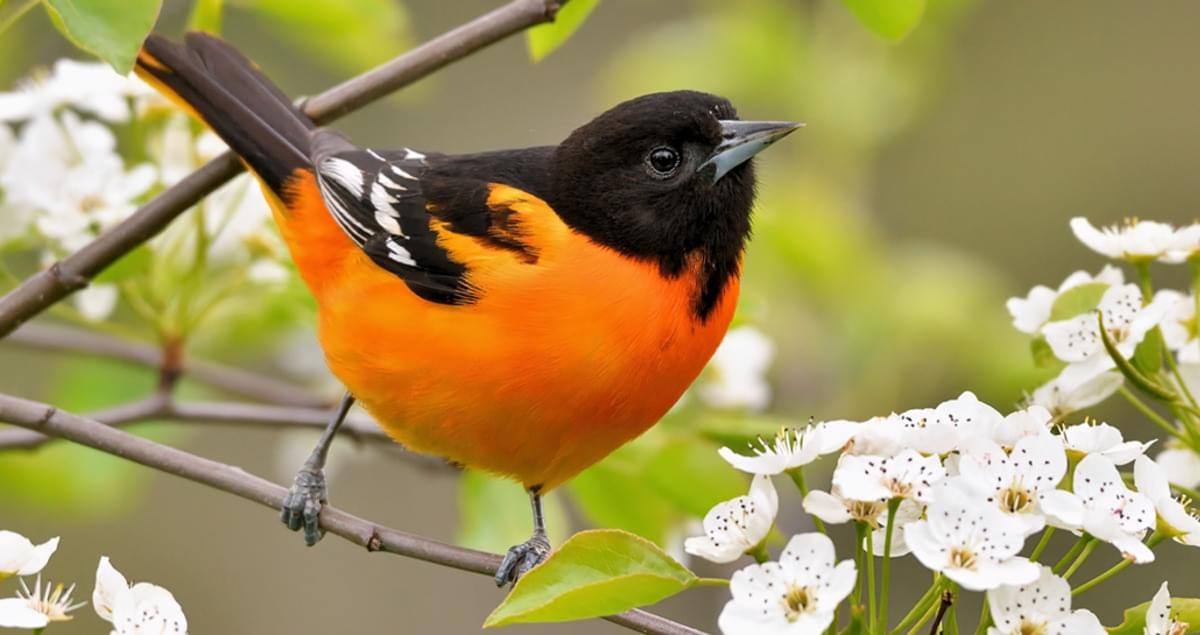 |
| Baltimore Oriole |
Stunning with vivid orange plumage and contrasting black wings and back, the Baltimore Oriole is Particularly against the green vegetation of their preferred habitat—deciduous forests, orchards, and suburban areas all around eastern North America—these striking colors make them a delight to see.
male Baltimore Orioles are renowned for their deft weaving, building enormous nests from grasses, plant fibers, and even synthetic materials like yarn and string. Rising from the outer branches of trees, these nests provide a safe refuge for their mate and young.
Eating insects, fruit, nectar, and occasionally small animals, Baltimore Orioles have a varied diet. Important pollers in their habitats, their long, thin bills are exactly suited for probing flowers and nectar extraction.
4. Blue Jay (Cyanocitta cristata)
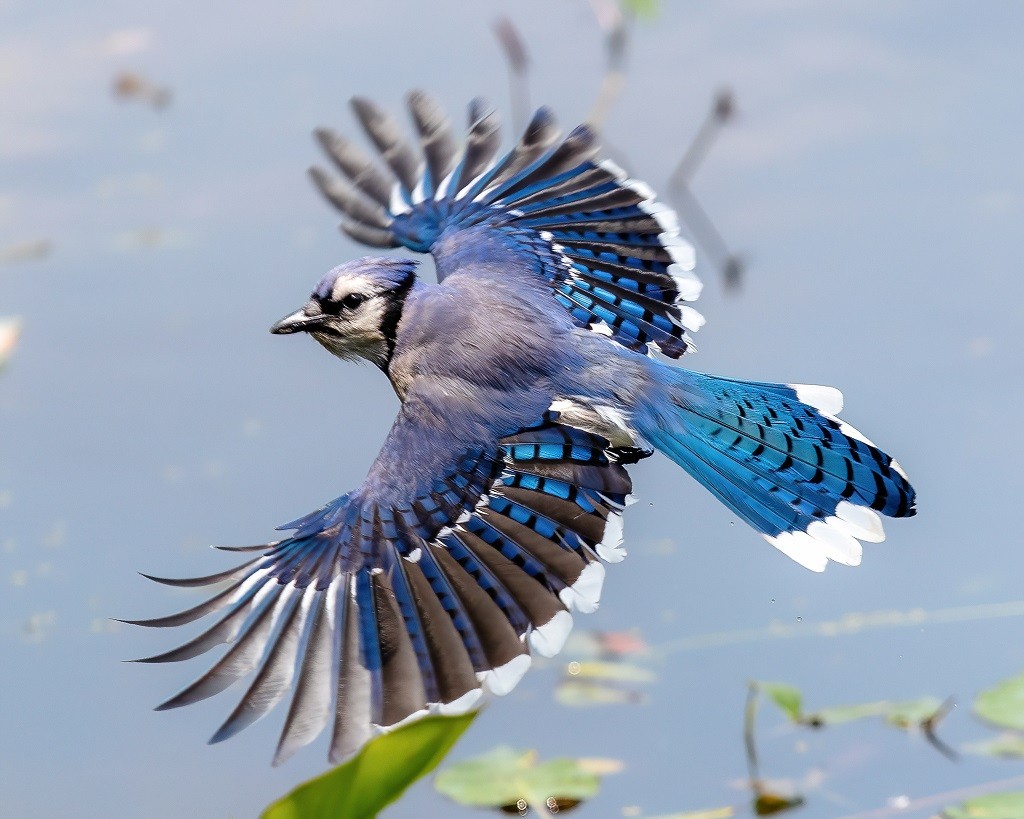 |
| Blue Jay |
Striking with vivid blue and white plumage, the Blue Jay is enhanced by a characteristic crest on top of its head. Over most of North America, these intelligent and vocal birds can be found in parks, woodlands, forests, and suburbs.
Often copying the calls of hawks and other birds to discourage possible predators or invaders from their territory, blue Jays are renowned for their raucous calls and mimicry skills. Consuming a great range of foods, including seeds, nuts, insects, small vertebrates, and even eggs and nestlings of other bird species, they are opportunistic feeders.
Blue Jays form monogamous couples during the breeding season and cooperate to create cup-shaped twig, grasses, and other plant material nests in trees or shrubs. After roughly three weeks, these nests give a safe place for raising their young, which fledge.
5. Scarlet Tanager (Piranga olivacea)
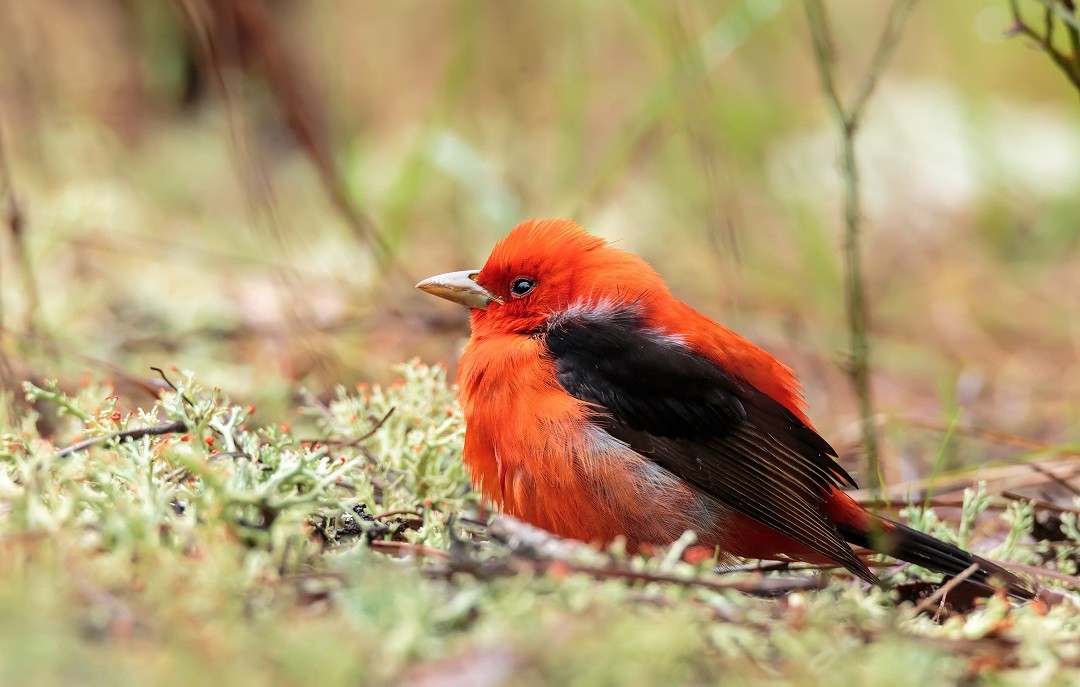 |
| Scarlet Tanager |
Male Scarlet Tanagers have brilliant red plumage and female Scarlet Tanagers have more subdued yellowish-green coloration. During the breeding season, these birds live in mature deciduous forests all around eastern North America and search for insects and berries high in the canopy.
During the breeding season, male scarlet tanagers change remarkably from their greenish winter plumage to vivid scarlet feathers. Birdwatchers seek them out because of their arresting look and melodic song.
Building cup-shaped nests in the canopy of trees, scarlet tanagers weaves them from grasses, twigs, and other plant materials. Usually found close to the edge of the forest, these nests give simple access to foraging grounds.
These five exquisite bird species represent only a taste of the great avian variety found in North America. Every one of them adds to the natural beauty of the continent and bears evidence of the need of safeguarding our natural environments.
6. Wood Duck (Aix sponsa)
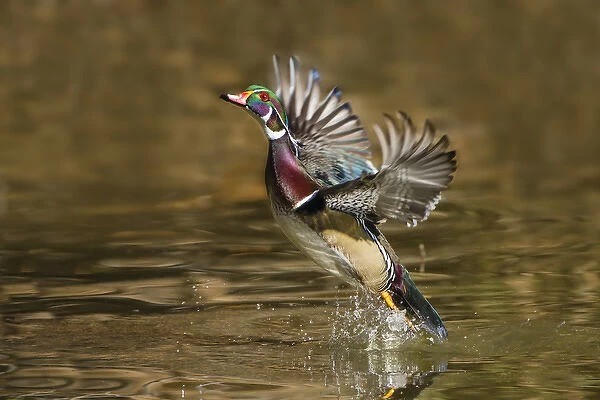 |
| Wood Duck |
One of the most beautiful and colorful types of duck in North America is the Wood Duck, which is also called the Carolina Duck. The beautiful iridescent feathers and intricate patterns of the wood duck make them stand out. They can be found in freshwater areas like wooded swamps, marshes, and ponds across most of the continent.
The heads and bodies of male Wood Ducks are a bright mix of colors, including iridescent blues, greens, and purples. Females, on the other hand, are mostly brown and gray, with eye rings that make them stand out. They are both attractive because they have unique crests and white stripes on their faces.
Wood Ducks nest in tree cavities, either naturally or in nest boxes that are put up by conservation groups. They are very flexible birds that can breed in a wide range of environments, even cities with suitable bodies of water.
Read More: Top 7 Most Aggressive Birds on the Planet
7. Peregrine Falcon (Falco peregrinus)
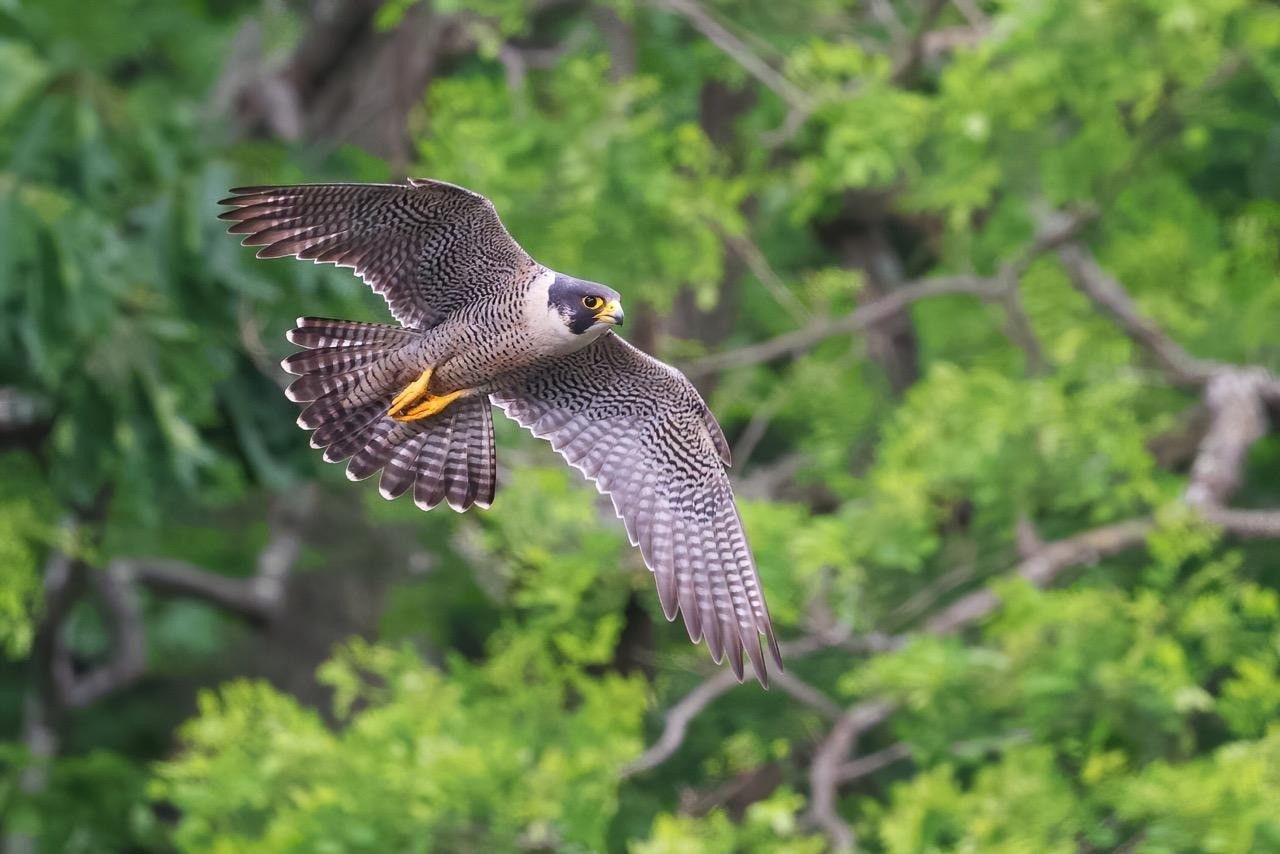 |
| Peregrine Falcon |
The Peregrine Falcon is a beautiful bird of prey that is known for being very fast and good at flying. There are many of these falcons living all over North America. They like to live in cliffs along the coast, mountains, and cities, where they hunt birds in the air.
The Peregrine Falcon is famous for its stooping hunting style, in which it dives quickly into the air to catch its prey. They are beautiful in the sky, with their sleek blue-gray feathers, strong wings, and unique markings on their faces.
Pesticide use and habitat loss used to put Peregrine Falcon populations in danger, but conservation efforts, such as breeding programs in captivity and programs to restore habitat, have helped them make an amazing recovery.
8. Eastern Bluebird (Sialia sialis)
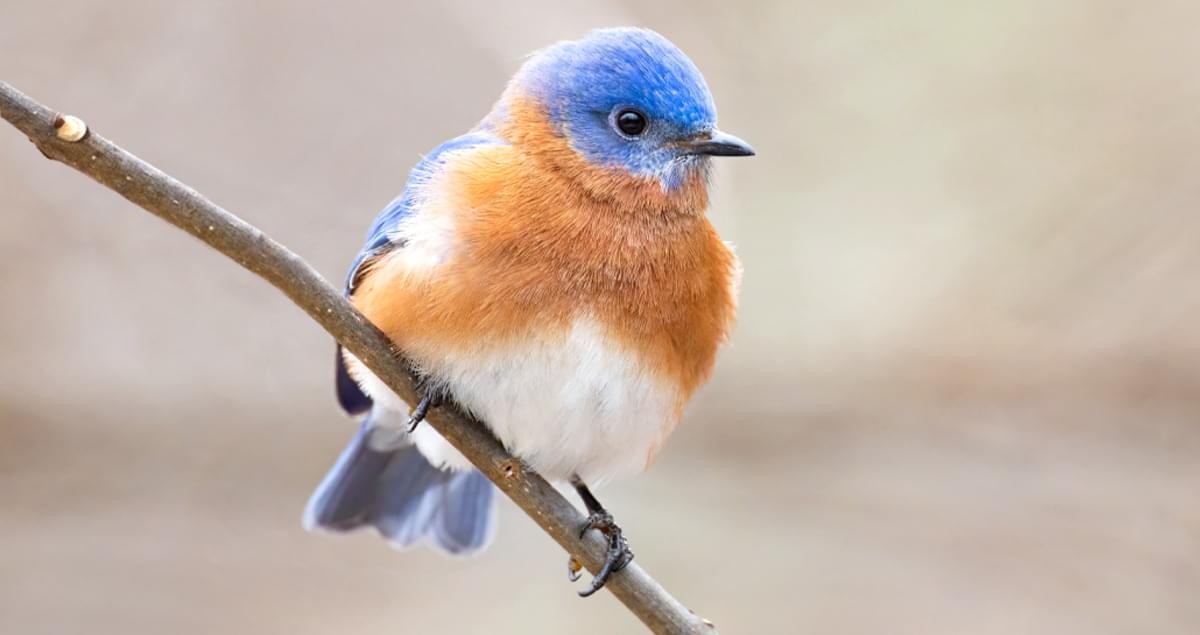 |
| Eastern Bluebird |
The Eastern Bluebird is a symbol of happiness and hope across eastern North America. With its vibrant blue upper parts, rusty-red chest, and white underparts, the Eastern Bluebird is a sight to behold in open woodlands, farmlands, and suburban areas.
These cavity-nesting birds often utilize abandoned woodpecker holes or nest boxes provided by conservation initiatives. They are primarily insectivorous, feeding on a variety of insects, including beetles, caterpillars, and grasshoppers, supplemented by berries and fruits, especially in the winter months.
Eastern Bluebirds are highly territorial during the breeding season, engaging in courtship displays and singing melodious songs to attract mates. Conservation efforts, such as nest box programs and habitat restoration, have helped stabilize Eastern Bluebird populations in many areas.
9. Roseate Spoonbill (Platalea ajaja)
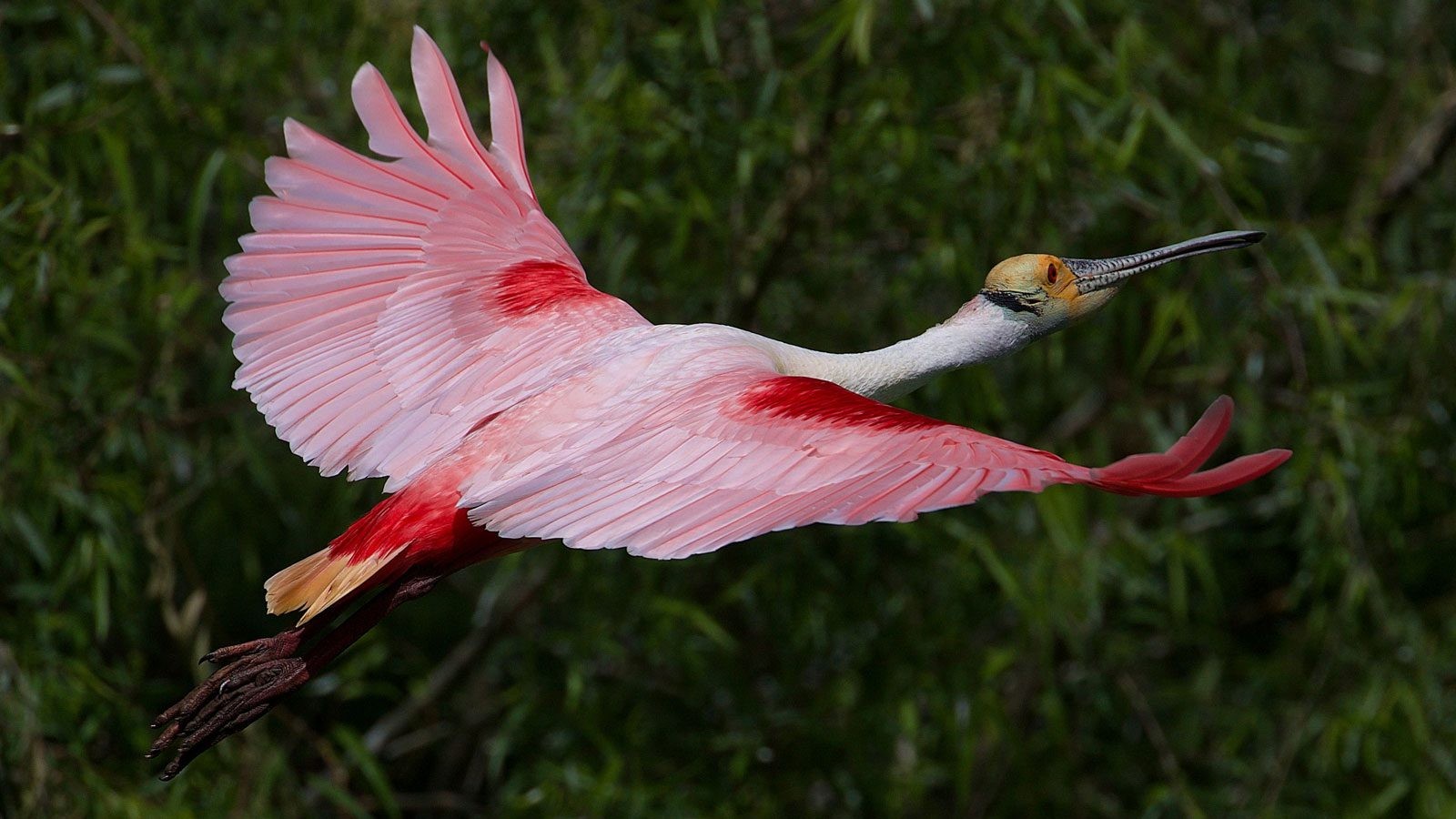 |
| Roseate Spoonbill |
The Roseate Spoonbill is a beautiful wading bird with bright pink feathers that makes it stand out. You can find these birds in coastal marshes, mangrove swamps, and wetlands all over the southeastern United States. Their spoon-shaped bills and bright red feathers make them easy to spot.
For food, Roseate Spoonbills move their bills back and forth through shallow water, picking out small fish, crustaceans, and bugs. Their pink color comes from the carotenoid pigments they eat, which are mostly found in crustaceans.
Roseate Spoonbill populations have grown again in recent years thanks to conservation efforts that protect their wetland homes. In the past, they were in danger because their habitats were being destroyed and their feathers were being hunted.
10. Painted Bunting (Passerina ciris)
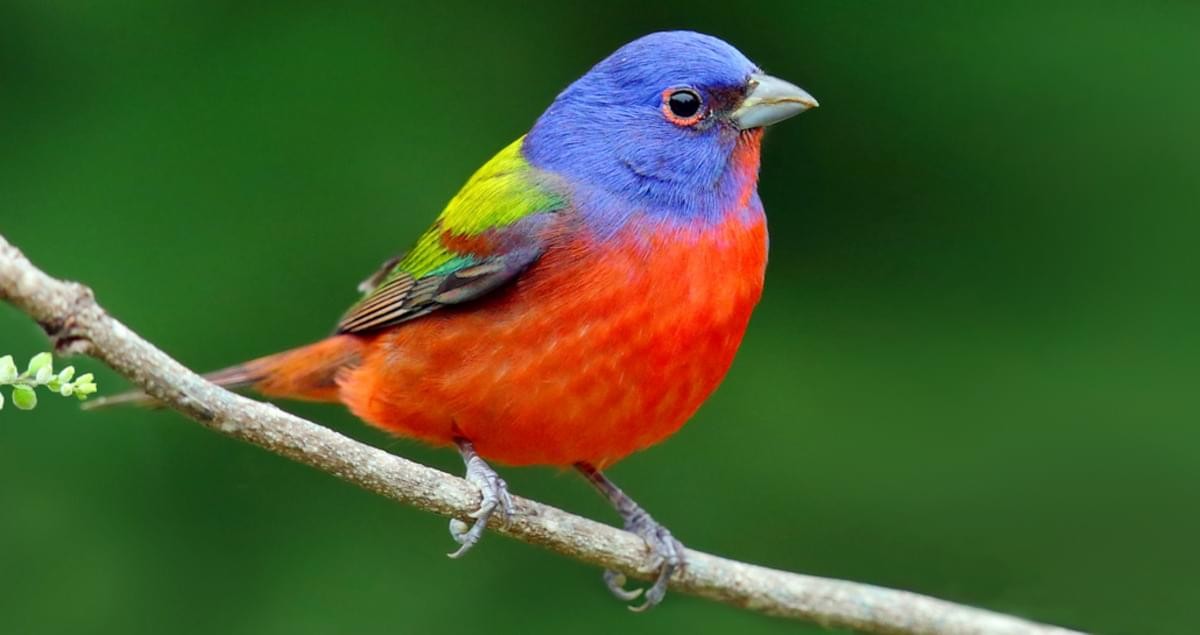 |
| Painted Bunting |
Some people say that the Painted Bunting has some of the most beautiful feathers of any bird in North America. A male Painted Bunting has a bright blue head, a green back, and red undersides. A female, on the other hand, has more muted green and yellow tones.
During the breeding season, you can find these small songbirds in gardens, shrubby areas, and the edges of forests all over the southern United States. They eat seeds, bugs, and berries.
Painted Buntings are known for being shy and singing beautiful songs. They are often heard but rarely seen in thickets and other shady places. Protecting the areas where they breed and spend the winter is an important part of conservation efforts for this beautiful species.
11. Great Egret (Ardea alba)
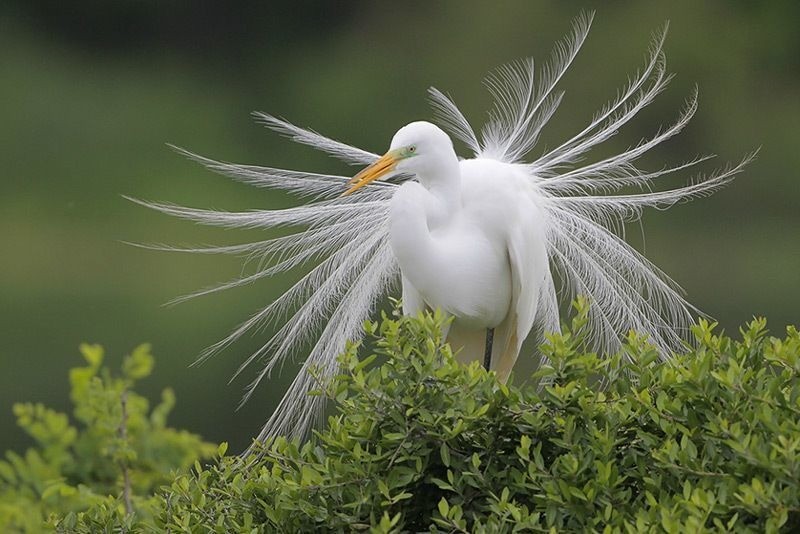 |
| Great Egret |
The Great Egret is a beautiful wading bird that is known for moving and looking very elegant. The Great Egret is a beautiful bird. Its feathers are all white, its neck is long, and its bill looks like a dagger. It lives in wetlands, marshes, and coastal estuaries across North America.
These lone hunters wait patiently for their prey, which includes fish, frogs, insects, and small mammals. When the time is right, they strike with lightning-fast accuracy. During the breeding season, Great Egrets do complicated courtship rituals to find mates. These include flapping their feathers and clattering their bills.
Great Egrets were almost wiped out because of their beautiful plumes, but they have come back thanks to conservation efforts and protecting their habitat. This makes them a symbol of how well conservation efforts are working.
12. Snowy Owl (Bubo scandiacus)
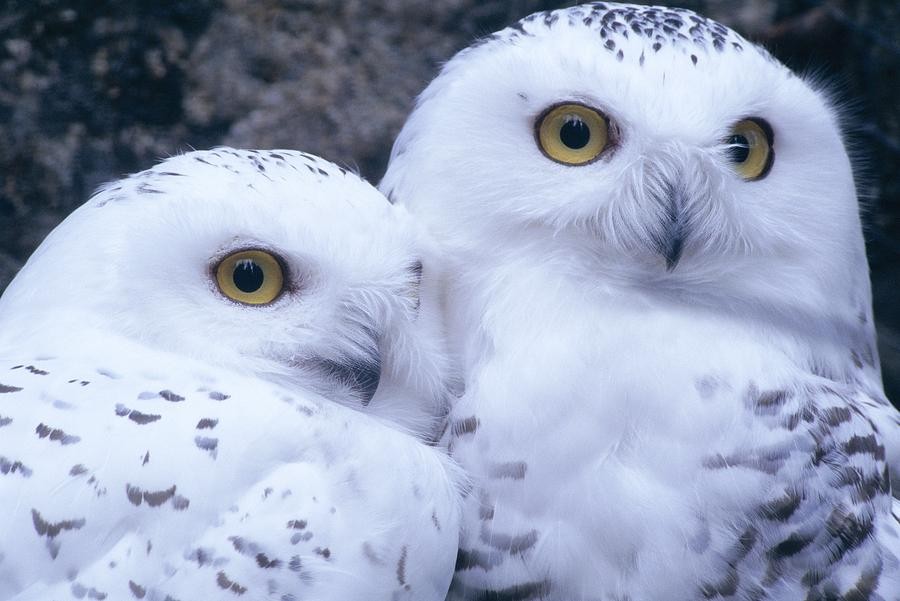 |
| Snowy Owl |
The Snowy Owl is a beautiful bird of prey that is known for its snow-white feathers and bright yellow eyes. These owls usually stay in the Arctic tundra, but sometimes they go south for the winter, which is fun for birdwatchers all over northern North America.
Because they live in the harsh Arctic, Snowy Owls have thick feathers, good eyesight, and strong claws. For the most part, they hunt small mammals like lemmings and voles. To find their prey under the snow, they fly quietly and have very good hearing.
Birdwatchers travel in droves to see the beautiful Snowy Owls in their temporary winter homes during times of irruption, when large groups of them move south to find food.
13. Western Tanager (Piranga ludoviciana)
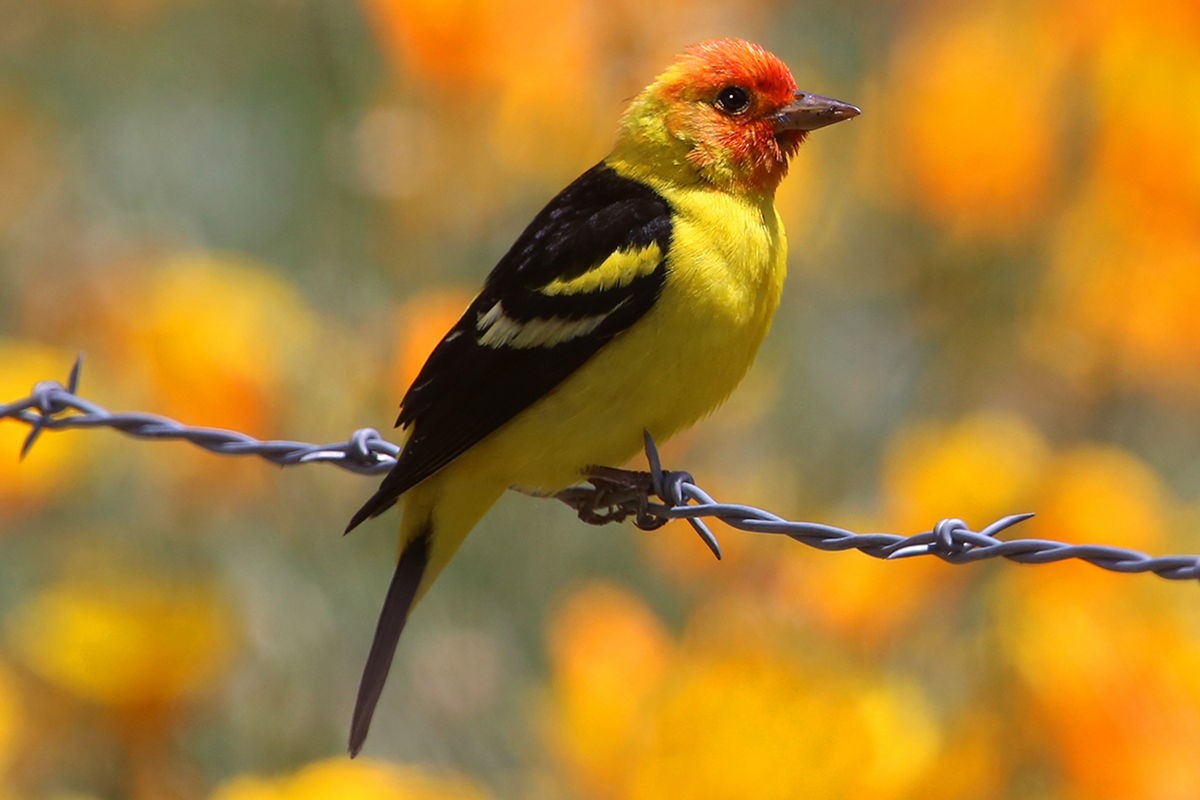 |
| Western Tanager |
The Western Tanager is a beautiful bird of prey. Its body is bright yellow, its wings are black, and its head is bright red. People who like to watch birds will be happy to see these bright birds in the coniferous forests and woodlands of western North America when they are breeding.
During breeding season, male Western Tanagers change dramatically. They molt from their olive-green winter feathers to their bright breeding colors. Their beautiful songs and active foraging habits make them even more charming and appealing.
Western Tanagers eat mostly bugs and fruit. They often use their special bills to pick berries off of bushes and trees. They often come to backyard feeders, especially when they are migrating.
14. Anna's Hummingbird (Calypte anna)
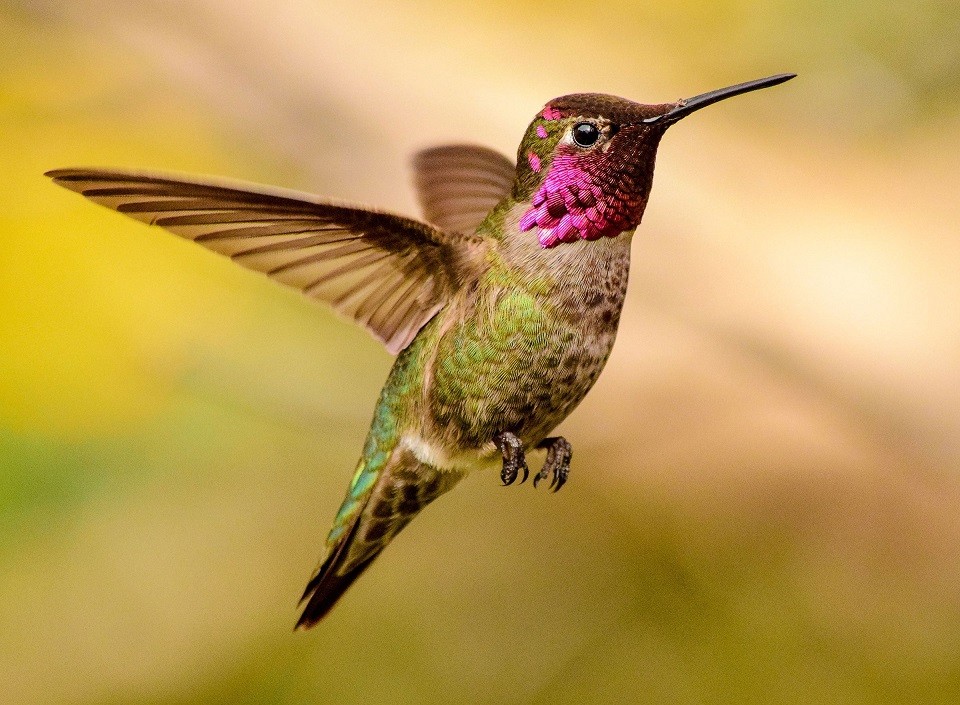 |
| Anna's Hummingbird |
The western United States and Canada are home to the beautiful Anna's Hummingbird, which is known for its iridescent green feathers and bright rose-pink throat. Small birds like these can be found in gardens, parks, and chaparral, among other places. They eat small insects and flower nectar.
Anna's Hummingbird males put on elaborate aerial shows, called "dive displays," that include steep dives and high-speed dives to attract mates and protect their territories. They live in many places all year because of flowers that are high in nectar and backyard feeders that give them extra food.
Anna's Hummingbirds help native plant species and ecosystems stay alive across their range by spreading pollen.
15. Cedar Waxwing (Bombycilla cedrorum)
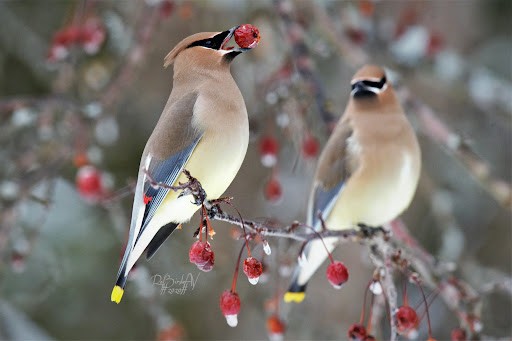 |
| Cedar Waxwing |
The Cedar Waxwing is a friendly and beautiful songbird with a black mask that makes it stand out. The Cedar Waxwing is a beautiful bird with a soft brownish-gray body, a yellow tail tip, and red wax-like tips on its secondary feathers.
In North America, you can often see these birds in groups eating berries and fruits in forests, orchards, and suburbs. The birds' soft, high-pitched calls and smooth flight make them even more attractive as they move from tree to tree.
The cedar waxwing gets its name from the trees where it nests and the waxy tips on its wings. Because the seeds they eat go through their digestive system and end up in their droppings, they play a big part in spreading seeds.
Conclusion
The bird population in North America is diverse and abundant because of the wide range of habitats, migratory routes, food availability, conservation efforts, and climatic diversity in the region. The combination of these factors creates a conducive environment for a wide variety of visually appealing and diverse bird species to inhabit and flourish, thus establishing North America as a sanctuary for individuals who enjoy observing and appreciating birds and the natural world.
Regardless of whether you are a passionate ornithologist or a casual spectator, the appearance of these magnificent avian creatures is certain to evoke a sense of astonishment and curiosity.
 Top 10 Most Beautiful Waterfalls in the US for Discovering Top 10 Most Beautiful Waterfalls in the US for Discovering The United States boasts a myriad of stunning waterfalls, each offering unique beauty and awe-inspiring views. Today, let's explore ten of the most beautiful waterfalls ... |
 Top 15 Breathtaking Vacations in the US You Must Visit at Least Once Top 15 Breathtaking Vacations in the US You Must Visit at Least Once From rugged coastlines to majestic mountains, the US boasts a diverse array of breathtaking destinations to satisfy every traveler's wanderlust. Here, we present the top ... |
 Top 15 Most Beautiful Female Athletes in the World Today Top 15 Most Beautiful Female Athletes in the World Today In the world of sports, talent and dedication often shine through. However, these athletes also captivate audiences with their stunning looks and charm. Here’s a ... |























